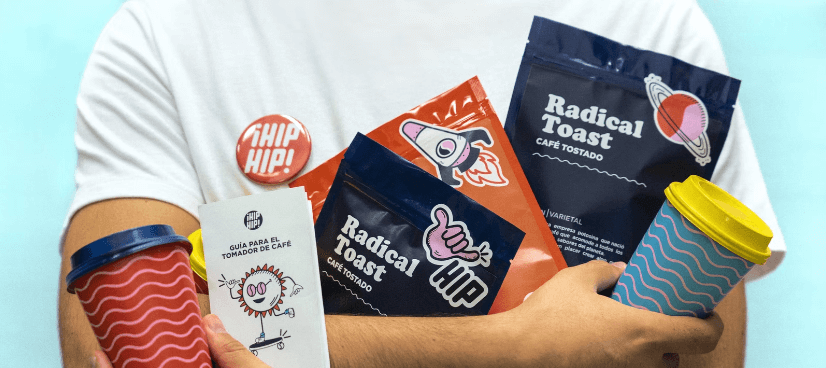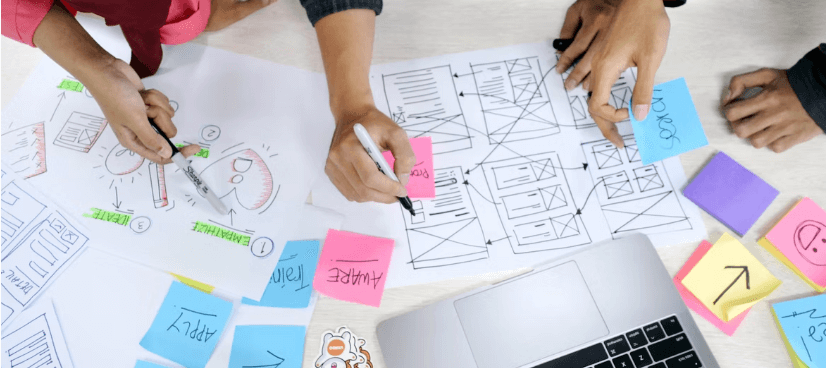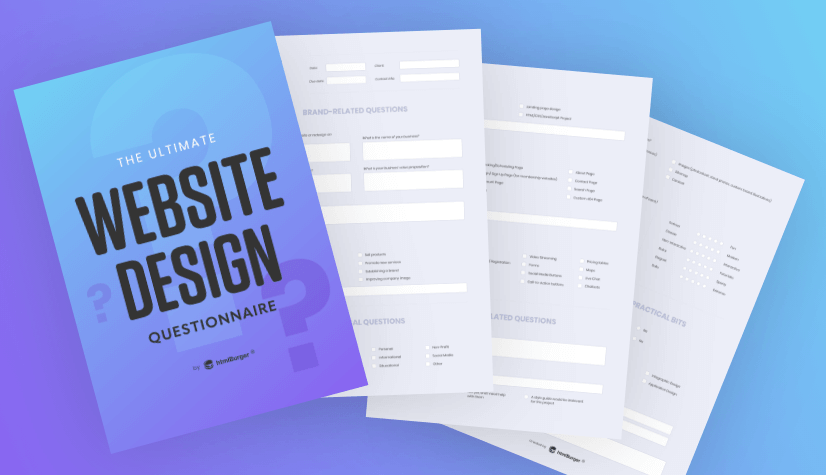

The website design questionnaire is a short survey you pass to your web design client to gain an understanding of the project’s requirements, goals, and expectations. In addition, the questionnaire will also help you get a better picture of the features, scope, budget, and timeframe you need to keep in mind throughout the design process. This is why in this blog post, we’re going to look at how to construct a website design questionnaire, what questions to include, and give you a pre-made web design questionnaire template you can download for free as an interactive PDF.
The primary goal of a website design questionnaire is to help you and your client gain a common vision of the final product. Getting the right questions will get you an understanding of important details such as the look and feel of the site, the goal, the business value proposition, and the target audience, so you can create a perfect design that meets your client’s expectations.
As with any other type of research, asking as many questions as possible brings you closer to understanding the problem. However, you wouldn’t want to overwhelm your client with a 10-page questionnaire, so you’d want to stick to the most important questions and keep your brief organized. For this purpose, it’s best to separate your questions into different categories.
Usually, these categories include brand-related questions, technical questions, design-related questions, and practical bits.

Before nailing down the technical details of the project, it’s important to start with a section related to the brand values and attributes. It will give you a better understanding of how your client wants to be perceived by their audience and what type of clients they wish to attract. This type of information will help you visualize an image that best represents the brand so you’ll be able to translate it into your design accurately.
To start with the obvious questions, you can kick off your questionnaire by asking right away if the project requires a redesign or an entirely new design for the website. You can also leave that question for later when you ask for technical details.
What’s important here is to get clarity about the business and its services. This includes learning what is the client’s target audience.
In some cases, new businesses might not yet know the specific audience they target right away, however, this may also give you an opportunity to upsell developing this in case you offer such services.
Aside from the type of website you’ll be building, it’s crucial to know what the website’s objective is. Its main goal might be promoting a new service, or establishing a brand, or it might require a custom CMS that will help your client manage content later. You can put everything that you think your client might be interested in and set it as a multiple choice. Here’s an example of what this question might look like in your questionnaire.
The best part about this question is that it will give your client ideas for how to improve the entire concept of their website.

With the brand values and attributes out of the way, it’s time to build the next section that will help you narrow down the purely technical aspects of the website.
Your client will be able to select the purpose of the website, additional requirements, the number and type of pages, and more.
In this section, you can also ask your client to clarify whether the website will be designed and developed from scratch, or will be powered by a CMS platform.
If the client confirms their website is powered by a CMS like WordPress, Shopify, Webflow, or HubSpot, make sure you leave space for them to clarify which. In most cases, this will mean you’ll have to design a custom template or customize an existing one, so you’ll need to communicate that with your client during the brief.
In many cases, your client will only want a few pages based on each type they need. Here you can either leave blank space for your client to list the pages or leave it as a multiple choice question.
There are dozens of webpage types, however, you can list only the important ones that are usually found on most websites.
Multiple-choice questions are also appropriate when you ask for the website features. Unless the client has already prepared a detailed brief, this question will help them create a clear structure of the website and what it should include.
This, respectively, will give you a detailed list of what you need to design.
Of course, no matter how detailed this question is, you will still need to drill down into the specifics during the brief.

Aside from the technical part, the number, and the type of pages, it will be also helpful to learn about your client’s visual preferences in terms of colors, shapes, style, and fonts. A very popular practice is to ask the client for three websites they like and three websites they dislike, which will give you a general idea of what you’ll be going for. However, clients often skip answering these questions mostly because they either don’t have any reference website in mind or if they do, they can’t decide what exactly they like about it.
Instead, you can make things easier for your client by asking more specific questions and giving them multiple answers to choose from.
If your task is to redesign an existing website, asking what your clients dislike about the old version will give you valuable insight on what to avoid.
In some cases, you will work for clients who already have brand guidelines. These clients will usually send you the style guide as a reference in their initial inquiry, however, if you haven’t received one, or the client hasn’t mentioned it, it’s best to ask.
In order to avoid vague answers that will lead you to ask follow-up questions, you can always add options:
The same goes for other related brand assets that you will need to work with.
This will give you an understanding of what your clients already have and if not, it might be something they’ll need you to help them with.
A great way to grasp the essence of your client’s vision is to ask them for the brand’s characteristics. You can do this by listing different characteristics and asking the client to select the few that fit the brand’s image.
List the characteristic pairs that will help you visualize your client’s logo. Including a neutral option will guide your client to select the characteristics that matter the most. Here are some examples:
In most cases, the client will choose the neutral option and you’ll be left with a specific vision for the website. For example, if they choose a greyscale, minimalistic, professional, non-interactive, elegant website, you’ll already have enough for your first concept.

The last section includes the project details, such as budget, timeframe, and additional requirements.
And last, ask for any additional requirements.
Or if you offer multiple services, you can make it a multiple-choice.
List all related services you’re willing to provide. In most cases, even if the client initially decides they won’t need any additional services, they will remember this little piece of information when you deliver a final design product they will love.
And last, leave some space for any additional info the client would like to share but wouldn’t find anywhere else in the questionnaire.

The full template consists of all the questions from the article, compiled into an interactive PDF.
You can now use these questions to build your own web design questionnaire and share it with your future clients via online form tools, Google Docs, or PDF. Or, you can also download the free template we prepared for you and adjust it to fit your specific project.
In the meantime, you may also be interested in some of the related articles: